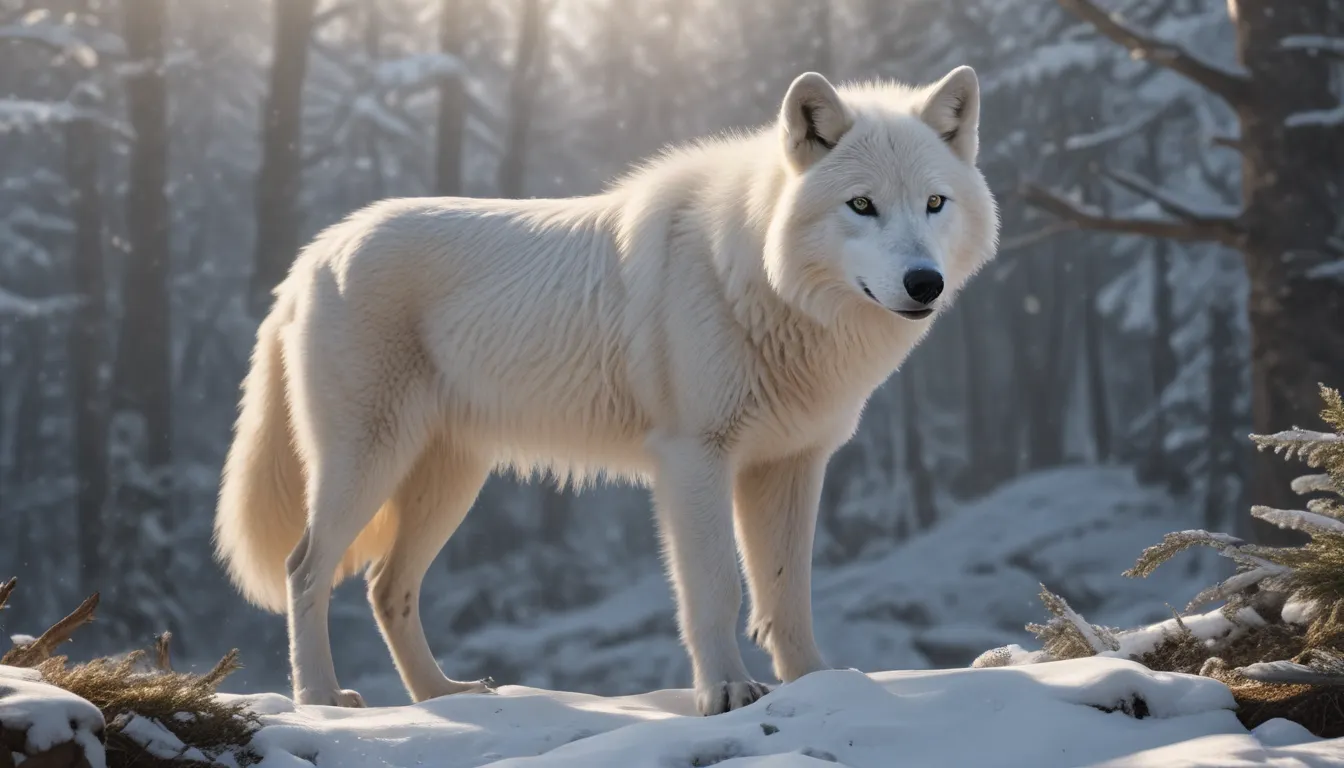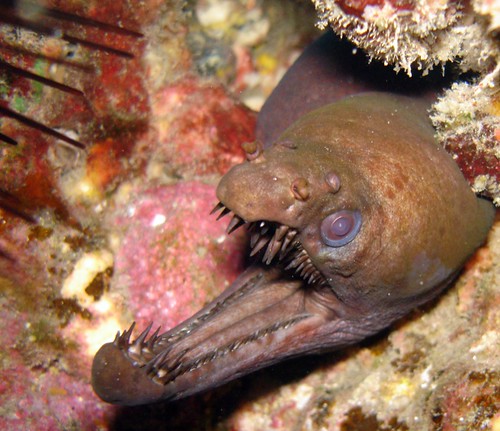The pictures we use in our articles might not show exactly what the words say. We choose these pictures to make you interested in reading more. The pictures work together with the words but don’t take their place. The words still tell you the important facts.
Have you ever been captivated by the mesmerizing presence of the Arctic wolf, also known as the white wolf, gracefully roaming the frozen tundra of the Arctic regions? These magnificent creatures are not only visually striking but also embody resilience and adaptability in one of the harshest environments on Earth. Join us on a journey to explore 18 intriguing facts about the Arctic wolf, shedding light on their behavior, habitat, and unique adaptations that make them a true symbol of the unforgiving yet awe-inspiring Arctic wilderness.
Discovering the Arctic Wolf’s World
The Arctic Wolf: Master of Survival
The Arctic wolf, also referred to as the white wolf or polar wolf, is a magnificent predator perfectly suited to the harsh Arctic conditions. Their unique adaptations and behaviors highlight their mastery of survival in one of the most challenging environments on the planet.
The Colorful Fur of the Arctic Wolf
Contrary to popular belief, the Arctic wolf's fur is not always white. It can exhibit variations in color, including blueish or greyish tinges, allowing them to blend seamlessly into their surroundings and enhancing their hunting capabilities.
Insulation and Protection: Thick Fur and Fat Layer
Arctic wolves boast a double-layered coat consisting of a dense undercoat and longer guard hairs, providing insulation against the biting cold of the Arctic climate. Additionally, a layer of fat beneath their skin further protects them from extreme temperatures.
Social Bonds and Survival Strategies
The Power of Teamwork in Arctic Wolves
Arctic wolves are highly social animals that live and hunt in packs, showcasing remarkable teamwork and cooperation. Their collaborative hunting techniques enable them to take down larger prey, demonstrating their strategic prowess in the hunt.
Keen Hearing for Successful Hunting
With exceptional hearing abilities, Arctic wolves can detect the movements of prey under the snow, thanks to their large, well-pricked ears. This keen sense of hearing gives them an edge in pinpointing the location of potential meals during the hunt.
Physiological Adaptations for Arctic Survival
Arctic wolves possess several physiological adaptations that aid in their survival in the icy habitat. Features such as smaller ears and shorter muzzles reduce heat loss, while their compact bodies minimize exposure to the cold, showcasing their remarkable adaptations.
Exploring the Arctic Wolf’s Lifestyle
Endurance and Travel: Expert Long-Distance Travelers
Arctic wolves are known for their extensive travels across vast distances in search of food, highlighting their exceptional endurance and resilience in traversing the challenging Arctic terrain to sustain their survival.
Diverse Diet and Opportunistic Feeding
Being opportunistic feeders, Arctic wolves consume a varied range of prey, including muskoxen, caribou, Arctic hares, and lemmings. This adaptability in their diet ensures their survival in the ever-changing Arctic ecosystem.
Shelter and Safety: Expert Diggers
Adept at digging dens in the snow, Arctic wolves create sheltered spaces for protection from harsh weather conditions and as safe havens for raising their young. These dens serve as crucial refuges during extreme Arctic weather.
Conservation Challenges and Intelligence
Threats and Conservation of Arctic Wolves
While Arctic wolves are not extensively hunted by humans, their populations face threats due to habitat loss and climate change. These factors can impact their prey availability and overall survival in the changing Arctic landscape.
Intelligence and Social Connections
Arctic wolves exhibit complex social behaviors and problem-solving skills, showcasing their high level of intelligence. Their ability to communicate and cooperate within the pack is essential for their survival and success in the Arctic wilderness.
Unique Communication Through Howling
Arctic wolves communicate through a combination of howls, barks, and body language, with their distinctive howls carrying over long distances for long-distance communication within the pack. This unique vocalization plays a crucial role in their social interactions.
Significance in the Arctic Ecosystem
Maintaining Ecosystem Balance
As top predators, Arctic wolves play a vital role in regulating the populations of their prey species, preventing overgrazing and maintaining the ecological balance of the Arctic ecosystem. Their presence is crucial for the health and sustainability of the Arctic wilderness.
Adaptation to Unique Environment
In the summer months, Arctic wolves experience continuous daylight due to the phenomenon of the midnight sun. Their ability to adjust their activity patterns to this unique environment showcases their adaptability and resilience in the face of environmental challenges.
Strong Family Bonds and Collective Success
Arctic wolf packs exhibit strong family bonds, with each member contributing to the survival and well-being of the group. This cohesion and cooperation within the pack are essential for their collective success in the harsh Arctic environment.
A Symbol of Majesty and Resilience
Resilience and Survival Skills
Despite the formidable challenges posed by the Arctic climate, Arctic wolves have evolved to be resilient survivors, showcasing their ability to thrive in one of the toughest environments on Earth. Their resilience is a testament to their adaptability and strength in the face of adversity.
Embodying the Spirit of the Arctic Wilderness
The Arctic wolf symbolizes the majestic and awe-inspiring wilderness of the Arctic, embodying grace, strength, and adaptability in the face of harsh conditions. Their presence in this remote region reflects the untamed spirit and beauty of the North.
Reflecting on the Arctic Wolf’s Legacy
In conclusion, the Arctic wolf is not only a fascinating and resilient creature but also a symbol of nature's remarkable adaptability and strength. From their unique hunting strategies to their critical role in ecosystem balance, Arctic wolves continue to inspire awe and fascination, reminding us of the importance of understanding and conserving these magnificent creatures. As we strive to protect and preserve the diversity of wildlife in the Arctic, we gain valuable insights into the delicate balance of nature and the significance of conservation efforts in safeguarding our planet's biodiversity.
FAQs
-
What makes the Arctic wolf's fur white?
The Arctic wolf's white fur acts as a highly effective camouflage in its snowy habitat, allowing it to blend seamlessly with the surrounding environment and enhancing its hunting prowess. -
How does the Arctic wolf survive in extreme cold?
The Arctic wolf has several adaptations for surviving in its harsh environment, including a thick insulating coat, compact body shape to minimize heat loss, and specialized blood circulation to keep its extremities warm.
Your Contribution Matters!
Our commitment to delivering trustworthy and engaging content is at the heart of what we do. Each fact on our site is contributed by real users like you, bringing a wealth of diverse insights and information. To ensure the highest standards of accuracy and reliability, our dedicated editors meticulously review each submission. This process guarantees that the facts we share are not only fascinating but also credible. Trust in our commitment to quality and authenticity as you explore and learn with us.






